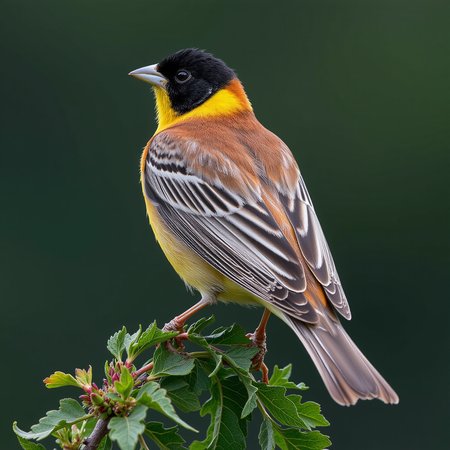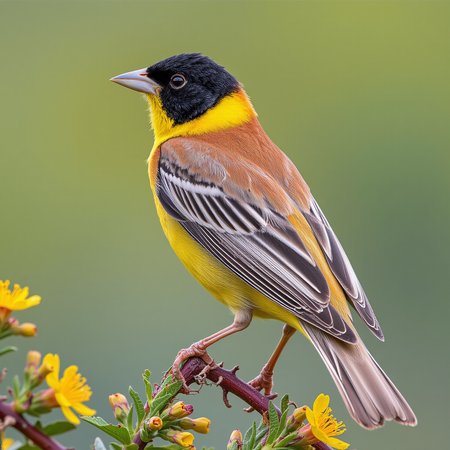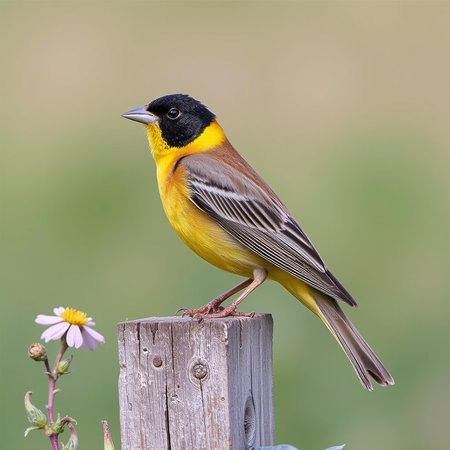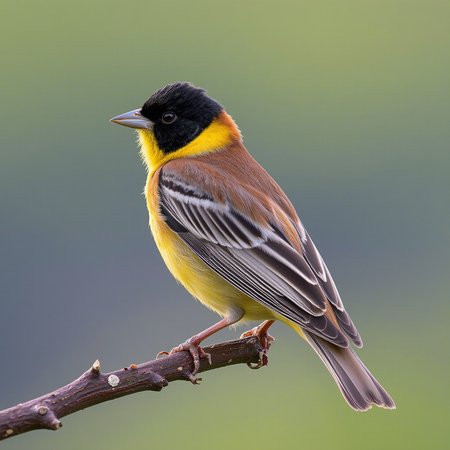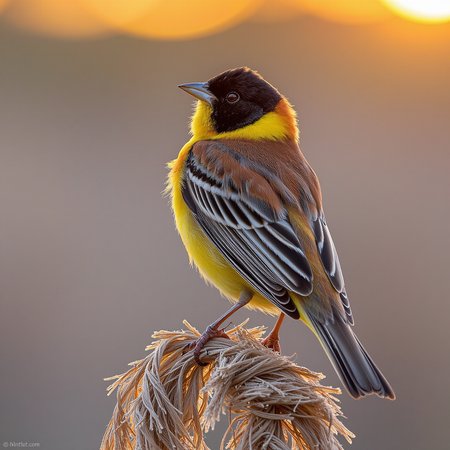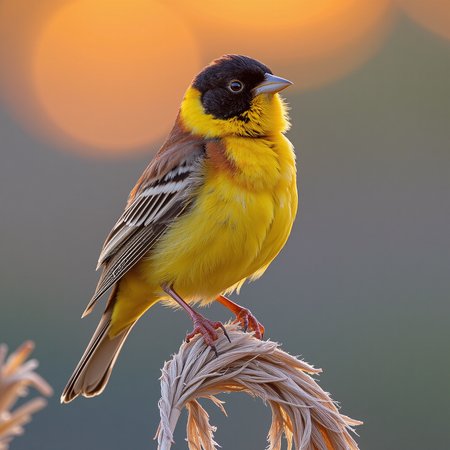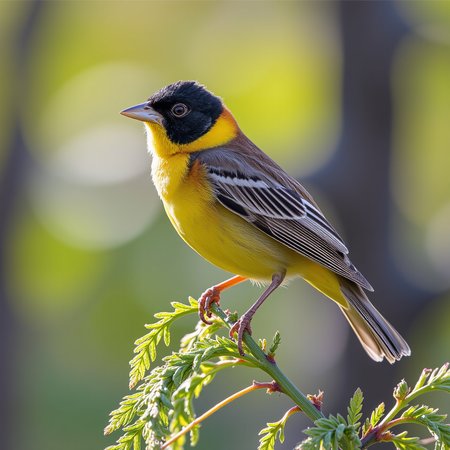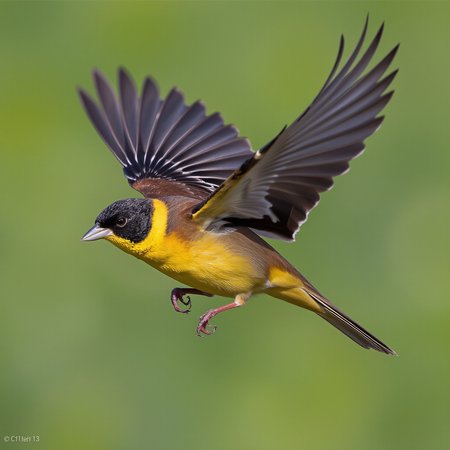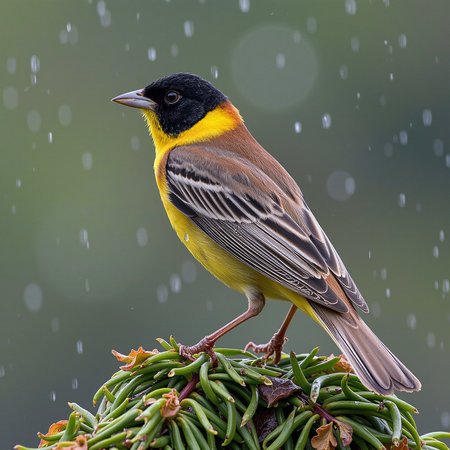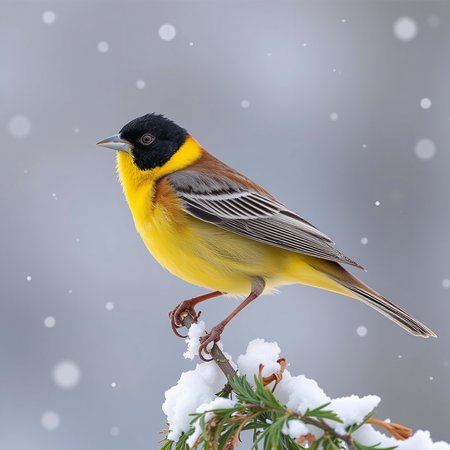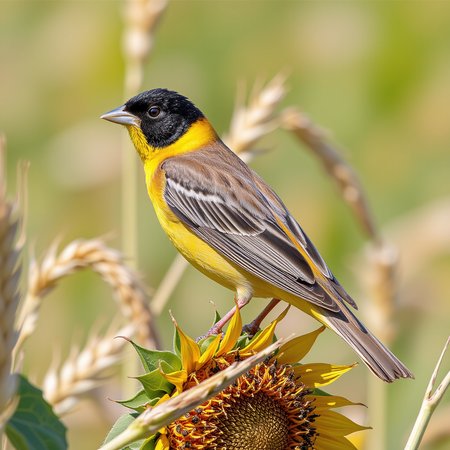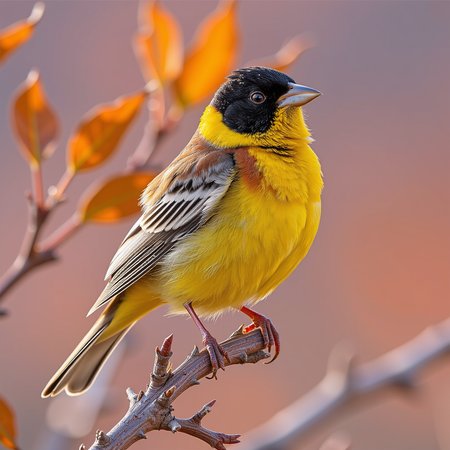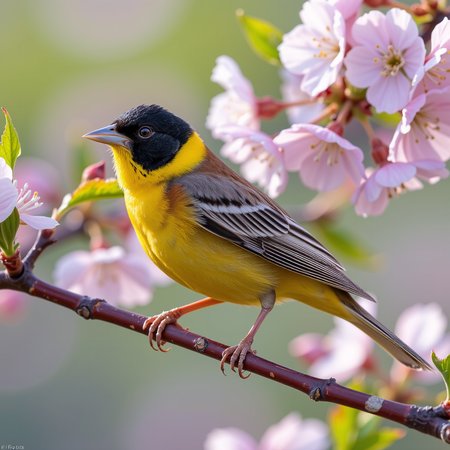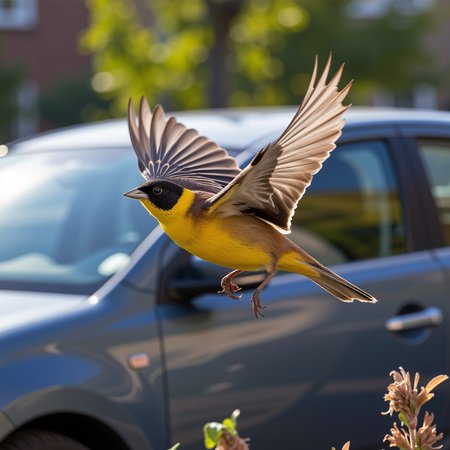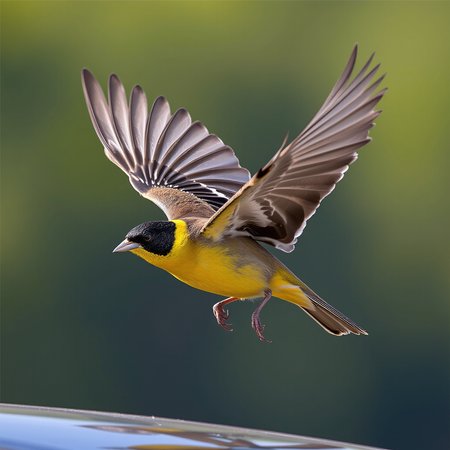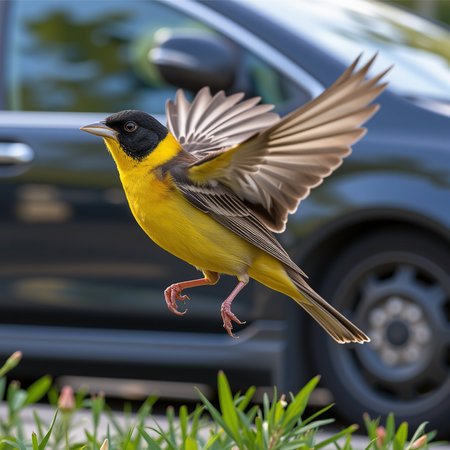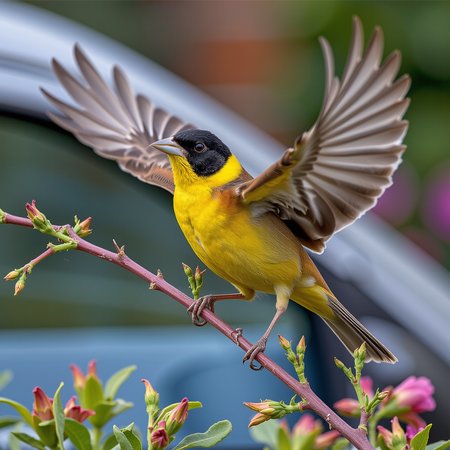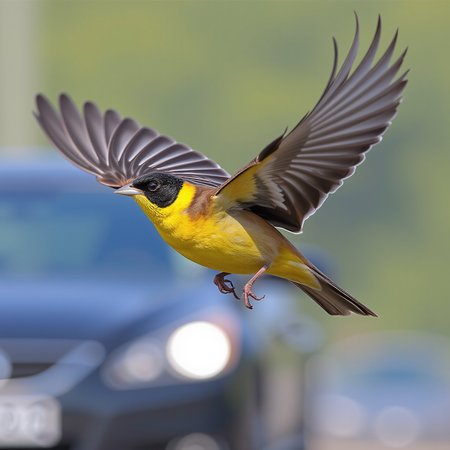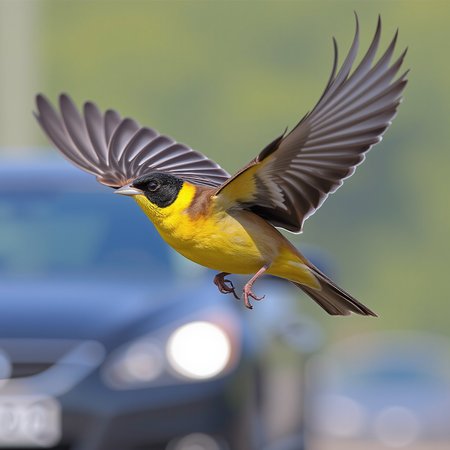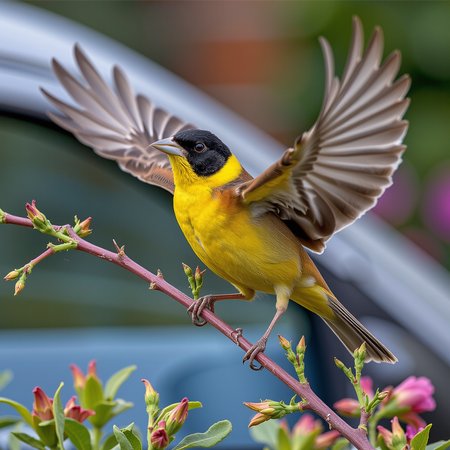The Black-headed Bunting (Emberiza melanocephala) is a passerine bird in the bunting family Emberizidae. It is known for its striking plumage in breeding males, which feature a black head, a chestnut-colored back, and bright yellow underparts. Females and juveniles are much duller in color.
Distribution and Habitat
This species breeds in open scrubby and agricultural areas across southeastern Europe, from Italy and the Balkans to Iran. It is a long-distance migratory bird, with most of its population wintering in India. Some individuals may travel further to other parts of Southeast Asia. During the non-breeding season, they form large flocks in grasslands and agricultural fields, often roosting communally with other species like the Yellow-throated Sparrow.
Diet
The Black-headed Bunting's diet is omnivorous. While feeding their young, they primarily consume insects. At other times, their diet mainly consists of seeds and grains, which they forage for in flocks on grasslands.
Breeding and Behavior
Nesting: Breeding occurs in the summer. They build a cup-shaped nest of dry grass lined with hair, typically in a low bush or on the ground.
Eggs: The clutch usually consists of four to six eggs.
Hatching: The eggs hatch after approximately 13 days, and the chicks fledge about 10 days later.
Migration: Males migrate in pure flocks and arrive at the wintering grounds before the females.
Conservation Status
The Black-headed Bunting is classified as "Least Concern" by the IUCN, indicating that the species is not currently facing significant threats to its population. However, some localized threats, such as high mortality from nesting on drying plant stems that collapse, have been noted.
